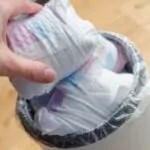How To Use Baby Care Kit? A Step-by-Step Guide
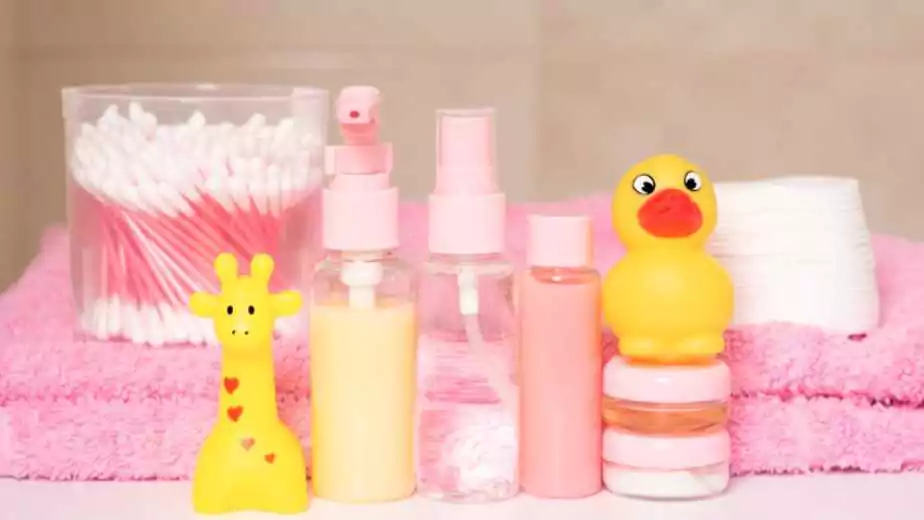
Navigating the journey of parenthood, especially for new parents, involves a mix of joy, challenges, and a steep learning curve. Among the essentials for any parent is the baby care kit – a collection of items specifically designed to cater to a baby’s health and hygiene needs.
Understanding what a baby care kit typically includes, and how to effectively use it, is crucial for ensuring the wellbeing of your little one. This guide will walk you through the essentials of how to use baby care kit and provide tips on choosing the right kit for your baby.
1 Understanding Your Baby Care Kit
Essential Items in Your Kit
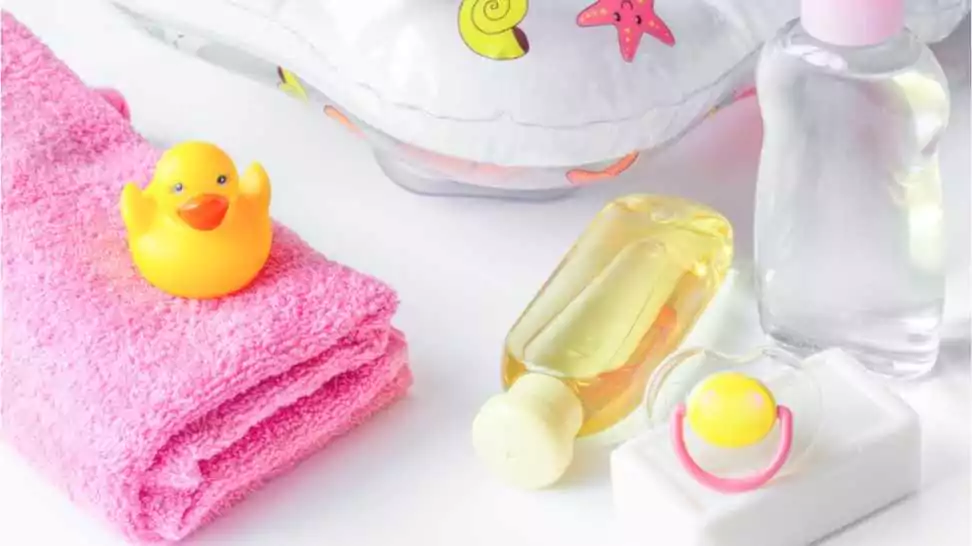
A standard baby care kit comprises several vital items, each playing a unique role in caring for your baby.
- Diapers and Wipes: The backbone of any baby care kit, diapers and wipes are essential for maintaining hygiene. They come in various sizes and styles, including cloth and disposable options.
- Baby Shampoo and Body Wash: Formulated for delicate skin, these products help keep your baby clean without causing irritation.
- Baby Lotion or Cream: To protect and nourish your baby’s skin, which is more prone to dryness and irritation than adult skin.
- Nail Clippers or Scissors: Baby nails grow fast and can be sharp; keeping them trimmed is important to prevent scratching.
- Digital Thermometer: A reliable way to monitor your baby’s temperature and ensure they aren’t running a fever.
- Nasal Aspirator: Babies can’t blow their noses, so a nasal aspirator is key to clear stuffy noses.
- Soft Washcloths or Sponges: Gentle cleaning is essential, and soft washcloths or sponges are perfect for this task.
Each item in the kit plays a crucial role in addressing the daily hygiene and health needs of your baby, ensuring they remain comfortable and well-cared for.
Choosing the Right Kit
Selecting the right baby care kit is as important as knowing what it contains.
- Consider Your Baby’s Age and Needs: Kits vary for newborns, infants, and toddlers. Choose one that aligns with your baby’s developmental stage.
- Hypoallergenic and Organic Options: If your baby has sensitive skin or you prefer natural products, look for kits with hypoallergenic or organic items. These products minimise the risk of allergies and skin irritations.
- Quality over Quantity: It’s better to have a few high-quality items than a kit overflowing with subpar products.
- Consult with Your Paediatrician: For personalised advice, especially if your baby has specific health or skin concerns.
2 Using the Kit - Step by Step
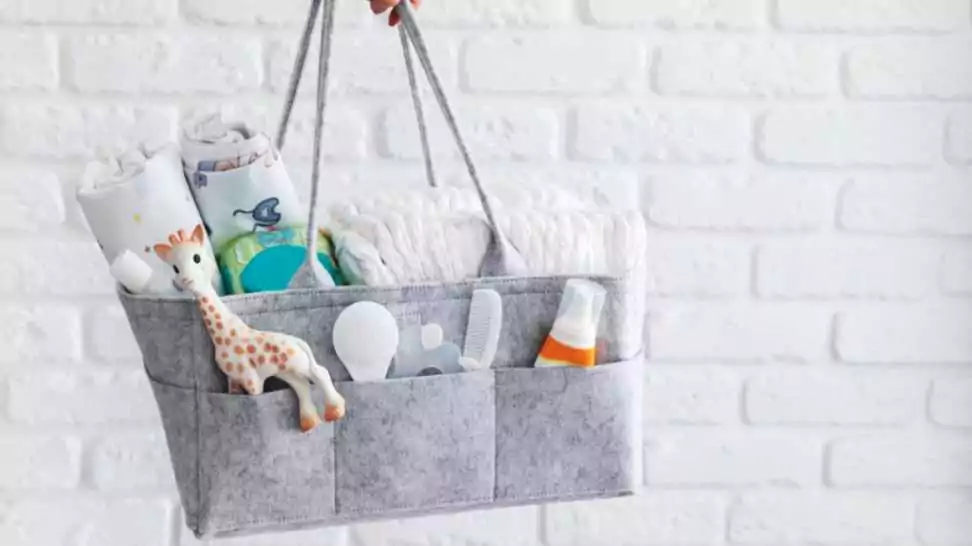
Proper use of a baby care kit is essential for ensuring the health and comfort of your little one. Let’s explore how to effectively use the items in your kit, focusing on basic hygiene, nail care, and hair and scalp care.
Basic Hygiene
Using Baby Wipes, Diaper Rash Cream, and Baby Powder
- Baby Wipes: Gently use the wipe to clean your baby during diaper changes. Ensure the wipes are alcohol-free to avoid skin irritation.
- Diaper Rash Cream: If you notice redness or rash, apply a thin layer of diaper rash cream on the affected area during each diaper change. This cream forms a protective barrier that helps heal and prevent further rash.
- Baby Powder: To use baby powder, sprinkle a small amount away from your baby to avoid inhalation. Then, lightly apply it to the diaper area to absorb excess moisture. However, some health professionals advise caution with talcum powder due to potential respiratory risks.
Tips for Keeping Your Baby Clean and Comfortable
- Regularly change diapers to prevent diaper rash.
- Use lukewarm water and a soft cloth for cleaning during diaper changes.
- Always pat the skin dry gently before applying creams or powders.
- Ensure the diaper area is dry before putting on a new diaper.
3 Nail Care
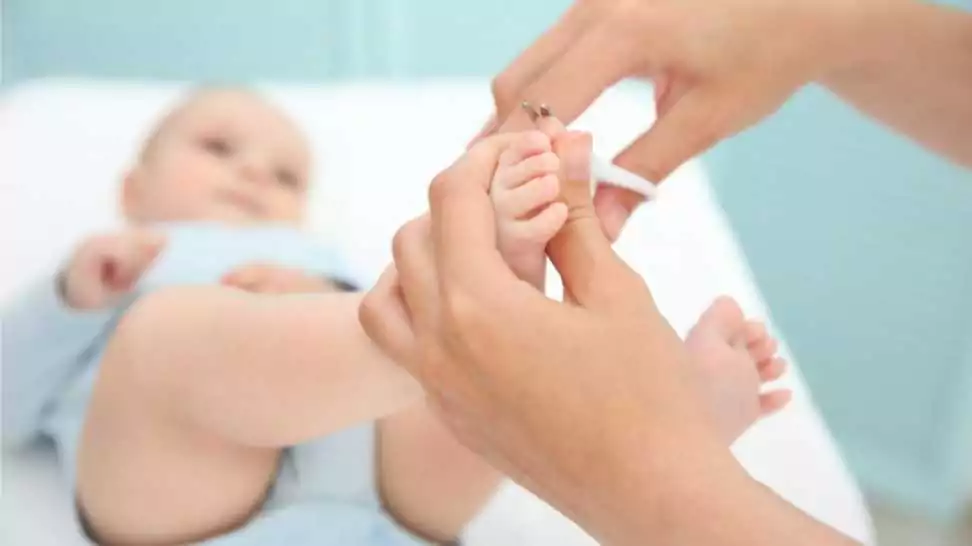
Safely Clipping Your Baby’s Nails
- Choose the Right Time: It’s often easiest to clip your baby’s nails when they are asleep or after a bath when nails are softer.
- Use Appropriate Tools: Use baby nail clippers or scissors with rounded edges for safety.
Step-by-Step Guide
- Gently hold your baby’s hand.
- Press the fingertip pad away from the nail to avoid cutting the skin.
- Clip straight across the nail, then slightly round the tips with a nail file.
Importance of Regular Nail Care
Regular nail care is vital to prevent your baby from accidentally scratching themselves or you. Keeping nails short and smooth can help avoid injuries caused by sharp nails.
4 Hair and Scalp Care

Using Baby Shampoo and Brushes
- Shampooing: Wet your baby’s hair with warm water. Apply a small amount of baby shampoo, gently lather, and rinse thoroughly.
- Brushing: Use a soft-bristled baby brush to gently comb your baby’s hair. This helps in evenly distributing natural oils and prevents tangling.
Tips for Dealing with Cradle Cap
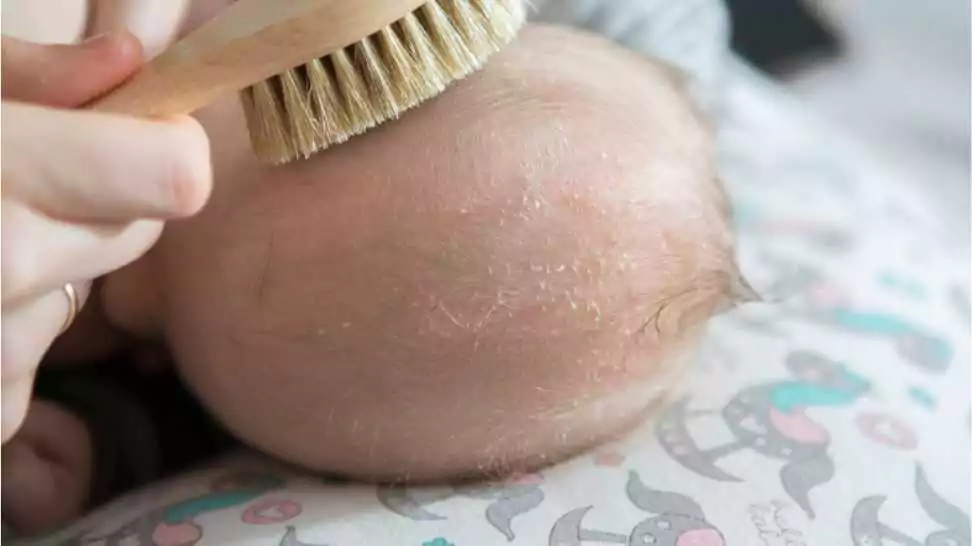
Cradle cap is a common condition characterised by scaly patches on a baby’s scalp.
- To manage it, regularly wash your baby’s scalp with a mild shampoo and gently brush the area to loosen flakes.
- For stubborn cradle caps, a light application of mineral oil before shampooing can help.
- Avoid picking at the scales, as this can cause irritation or infection.
5 Health and Safety Considerations
Ensuring the health and safety of your baby is paramount. This section covers important aspects like the sanitization and maintenance of your baby care kit and how to recognize and respond to potential allergic reactions.
Sanitisation and Maintenance of the Kit
Best Practices for Keeping the Baby Care Kit Clean and Hygienic
- Regular Cleaning: Wipe down all non-fabric items in the kit with a disinfectant wipe or a cloth dipped in a mild disinfectant solution. Ensure they are completely dry before storing.
- Fabric Items: Wash any fabric items such as washcloths or cloth diapers regularly in hot water and gentle, baby-safe detergent.
- Storage: Store all items in a clean, dry place. It’s advisable to keep the kit in a cool, dry area to prevent the growth of bacteria or mould.
- Check Expiry Dates: Regularly check the expiry dates of all products, especially creams, lotions, and wipes. Expired products can be less effective and might even cause skin irritations.
- Replacement of Items: Replace items like nail clippers or thermometers if they become dull or show signs of wear and tear.
- Personalisation: Customise the kit as per your baby’s changing needs. Add or remove items that are no longer necessary or need to be introduced as your baby grows.
Recognising and Responding to Allergies
Signs of Allergic Reactions to Products in the Kit
- Skin Reactions: Look for redness, rashes, hives, or swelling on the skin after using a new product.
- Respiratory Symptoms: Difficulty breathing, wheezing, or coughing can also be signs of an allergic reaction, especially if they occur soon after using a product.
- Discomfort: Excessive crying or irritation after using a product can be an indication of discomfort or an allergic reaction.
Steps to Take if Your Baby Has an Allergic Reaction
- Stop Using the Product: Immediately discontinue the use of any new product that seems to cause a reaction.
- Clean the Area: Gently wash the affected area with water to remove any traces of the product.
- Consult a Paediatrician: If the reaction is severe or does not improve, seek medical advice immediately. It’s important to let your paediatrician know about any new products you’ve used.
- Patch Test: For future product use, consider a patch test. Apply a small amount of the product to a small area of your baby’s skin and wait for 24 hours to see if there is a reaction.
- Keep a Record: Note down the product that caused the reaction and its ingredients. This can help you avoid similar products in the future.
6 Additional Tips and Tricks
This section is dedicated to providing creative and practical tips for maximising the utility of your baby care kit. We’ll cover how to organise your kit for easy access, manage baby care on the go, and even delve into making your own baby care items.
Organising Your Baby Care Kit
Creative Ideas for Organizing and Storing Kit Items
- Use a Portable Organiser: Invest in a compact, portable organiser with different compartments for easy categorization of items like diapers, creams, and wipes.
- Label Everything: Clearly label each compartment or item, especially if you’re sharing baby care duties with others. This makes it easier to find what you need quickly.
- Regular Inventory Checks: Periodically check the contents of your kit to replenish any depleted items and remove unnecessary ones.
- Separate Kits for Different Needs: Consider having separate smaller kits for specific purposes – like a diaper-changing kit, a feeding kit, and a bathing kit.
- Utilise Clear Pouches: Use transparent pouches for smaller items like nail clippers and thermometers for easy visibility.
On-the-Go Baby Care
Advice on Using Your Baby Care Kit While Travelling or During Outings
- Downsize for Mobility: Have a smaller, travel-sized version of your baby care kit for outings. Include essentials like diapers, wipes, a change of clothes, a small toy, and travel-sized hygiene products.
- Stay Prepared for Emergencies: Include basic first-aid items like band-aids, antiseptic wipes, and a mini thermometer.
- Easy-to-Carry Bag: Choose a lightweight, easy-to-carry bag with a shoulder strap that easily attaches to a stroller.
- Disposable Options: For longer trips, consider disposable items that can be used and thrown away to reduce carrying back soiled items.
- Refresh Kits Regularly: After each outing, replenish used items to keep the travel kit always ready.
DIY Baby Care Items
Simple Recipes and Ideas for Making Homemade Baby Care Products
- Natural Baby Wipes: Soak soft, durable cloth squares in a mixture of water, a drop of mild baby soap, and a teaspoon of coconut oil. Store them in a sealed container.
- Homemade Diaper Rash Cream: Mix zinc oxide with coconut oil to create a soothing, natural diaper rash cream.
- Organic Baby Powder: Create a corn starch-based baby powder, optionally adding some lavender or chamomile essential oil for a calming scent.
- Gentle Baby Shampoo: Combine mild castile soap with water and a teaspoon of vegetable glycerin for a simple, tear-free shampoo.
- Soft Baby Lotion: Blend shea butter, coconut oil, and a bit of vitamin E oil for a hydrating, chemical-free lotion.
- Remember to patch-test homemade products to ensure they are safe for your baby’s skin, and consult with a paediatrician if you’re unsure about any ingredient.
7 Understanding Your Baby's Needs
In this section, we focus on the evolving needs of your baby as they grow and how to interpret their cues. Understanding these aspects can significantly enhance your ability to provide the best care.
Age-Specific Care
Adapting to Your Baby’s Growing Needs
- Newborns (0-3 Months): At this stage, your baby needs frequent diaper changes, gentle bathing, and nail care. Skin care should be minimal as newborn skin is very sensitive.
- Infants (3-12 Months): As your baby becomes more mobile, regular skin and hair care become important. You might also need to start using more interactive items in your kit, like toys for bath time.
- Toddlers (1-3 Years): Toddlers require more active and engaging hygiene routines. Introduce them to basic dental care and more regular hair washes. Safety becomes a bigger concern as toddlers are more mobile and curious.
- Pre-schoolers (3-5 Years): Encourage independence in personal care, such as washing hands and face. Continue adapting your kit to include age-appropriate items like fluoride toothpaste and regular combs or brushes.
- Adjusting for Developmental Milestones: Be aware of your child’s developmental milestones and adjust the care and the contents of your kit accordingly. For example, teething will require appropriate pain relief and gum care products.
- Consulting Healthcare Professionals: Regular paediatrician visits will help you keep track of your baby’s health and development, allowing you to make informed adjustments to their care routine.
Reading Your Baby’s Cues
Interpreting Signals and Responses
- Crying: Different cries can indicate hunger, discomfort, or the need for a diaper change. Learning to distinguish these can help you respond more effectively.
- Body Language: Pay attention to how your baby reacts during care routines. For example, squirming or fussing during a bath might indicate the water temperature is not comfortable.
- Facial Expressions: Babies often communicate through their facial expressions. A relaxed face during a massage or skincare routine can indicate contentment, while a scrunched-up face might signal discomfort.
- Vocalisations: Beyond crying, listen for coos, laughs, and babbles. These sounds can indicate pleasure and are a positive sign that your baby is enjoying the care routine.
- Routine Adjustments: Based on your baby’s responses, you may need to adjust routines. For instance, if your baby has sensitive skin, you might need to change lotions or bath products.
- Patience and Observation: Understanding your baby’s cues takes time and patience. Keep a diary if needed, to note down what works best and what causes discomfort or irritation.
8 Wrapping Up
Knowing how to use a baby care kit effectively is more than just a matter of convenience; it’s about ensuring the health, safety, and comfort of your baby. Each item in the kit has its role and understanding this helps in providing the best care possible.
Parenthood is a journey filled with learning and growth, not just for your baby but for you as well. It’s important to be patient and attentive while caring for your baby. Remember, every baby is unique, and what works for one may not work for another. Your attentiveness to your baby’s responses and needs is crucial in adapting your care techniques and kit contents.
As you continue on this beautiful journey, embrace each moment, learn from each experience, and cherish the bond that you are building with your child. Your love, care, and attention are the most valuable components of any baby care kit.
Thank you for joining us on this guide. May your parenting journey be filled with joy, love, and countless memorable moments.
Community Q&A
About This Article
This article has been viewed 105 times.


